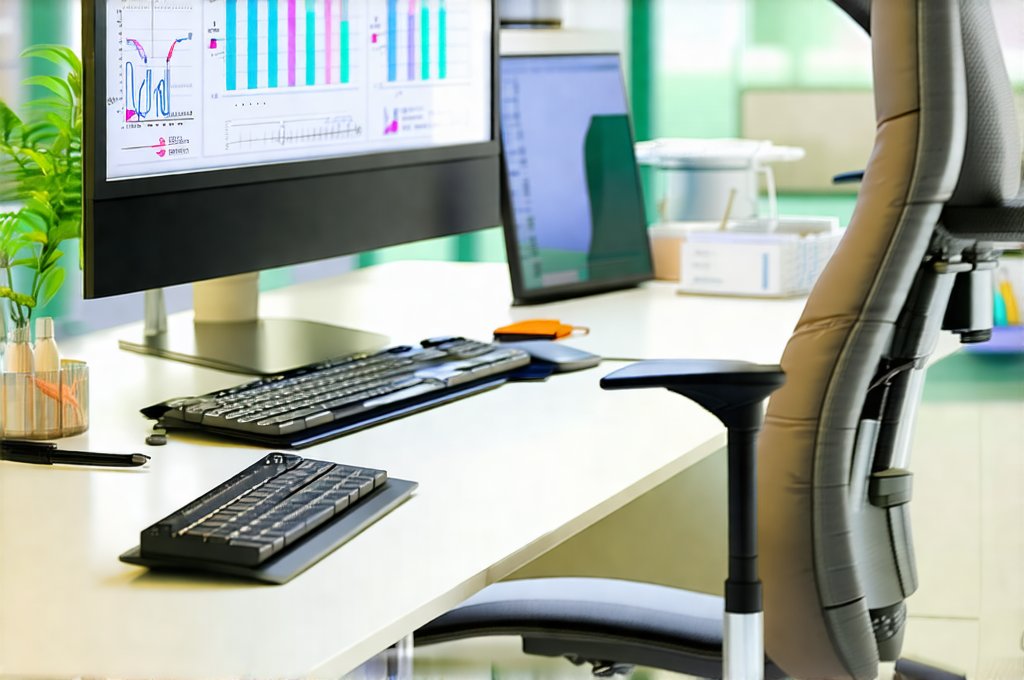Many individuals who spend prolonged periods sitting – particularly at desks for work – often experience discomfort related to abdominal pressure and urinary function. This isn’t always immediately obvious as pain; it can manifest as subtle tightness, frequent urges to urinate even with minimal fluid intake, a feeling of fullness or bloating, or simply an overall sense of unease in the lower abdomen. These sensations are frequently linked to postural habits and workspace setups that inadvertently compress the abdominal cavity, impacting internal organs and nerve pathways responsible for bladder control and digestive function. Understanding how our bodies interact with the work environment is crucial for mitigating these issues and fostering a more comfortable and productive workday.
The core issue isn’t necessarily sitting itself – although prolonged static posture always warrants attention – but how we sit, and the support (or lack thereof) provided by our workspaces. The natural curvature of the spine, coupled with adequate space for internal organs to function without restriction, is often compromised when desks are too high or low, chairs lack proper lumbar support, or even subtle habits like crossing legs consistently restrict blood flow and create uneven pressure. Addressing these factors through ergonomic adjustments can significantly alleviate abdominal compression and reduce urinary tension, leading to improved well-being and enhanced focus during work hours. This article will explore practical workspace tweaks aimed at addressing these concerns.
Optimizing Your Chair & Sitting Posture
The foundation of a comfortable and supportive workspace is undoubtedly the chair. A poorly chosen or improperly adjusted chair can contribute significantly to abdominal compression and urinary issues. It’s not simply about finding an expensive ergonomic chair; it’s about ensuring the chair fits your body and supports your individual needs. Key features to look for include adjustable height, lumbar support (ideally both height and depth adjustable), armrests, and a seat pan that allows for proper pelvic tilt.
- Adjusting the seat height is paramount: Your feet should be flat on the floor or supported by a footrest, with your knees at approximately a 90-degree angle. This prevents pressure points under the thighs and encourages healthy circulation.
- Lumbar support plays a vital role in maintaining the natural curvature of the spine. Insufficient lumbar support forces you to slouch, compressing the abdominal cavity and potentially impacting bladder function.
- Armrests should allow your shoulders to be relaxed and your elbows supported at approximately 90 degrees. This prevents tension in the upper back and shoulders that can cascade down into the lower body.
Beyond the chair itself, sitting posture is critical. Avoid slouching or leaning forward excessively. Maintain a neutral spine with your ears aligned over your shoulders, and your hips slightly higher than your knees. Regularly assess your posture throughout the day; it’s easy to slip into bad habits without realizing it. Consider setting reminders on your phone or using posture-correcting apps as helpful tools. A small cushion placed under the sit bones can sometimes help encourage a more upright and balanced pelvic tilt, reducing pressure on the abdomen. You might also find relief through daily affirmations that reduce tension.
Desk Height & Workspace Layout
The height of your desk significantly impacts posture and abdominal compression. A desk that’s too high forces you to raise your shoulders, creating tension in the neck and upper back which can contribute to overall muscle tightness and indirectly impact lower body comfort. Conversely, a desk that’s too low encourages slouching, compressing the abdomen as described previously.
Ideally, your elbows should be bent at approximately 90 degrees when typing, with your forearms parallel to the floor. This requires adjusting either the desk height or chair height (or both). Standing desks are an excellent option for breaking up prolonged sitting and promoting movement, but they too require proper adjustment and a gradual transition to avoid strain. A monitor positioned at arm’s length and eye level minimizes neck strain and encourages good posture.
Workspace layout also plays a role. Ensure there is enough space for your legs to move freely without obstruction. Avoid positioning yourself in a way that requires excessive twisting or reaching, as these movements can contribute to muscle imbalances and discomfort. Consider the placement of frequently used items – keep them within easy reach to minimize strain. A well-organized workspace promotes better posture and reduces the likelihood of adopting awkward positions. If you’re experiencing pain, consider if posture is a contributing factor.
Incorporating Microbreaks & Movement
Sitting for extended periods, even with an ergonomically optimized setup, isn’t ideal. Regular microbreaks are essential for preventing muscle fatigue and reducing abdominal pressure. These don’t need to be long – even a minute or two every 20-30 minutes can make a significant difference.
- Simple stretches: Focus on movements that counteract the effects of prolonged sitting, such as shoulder rolls, neck stretches, and gentle back extensions.
- Short walks: Get up and walk around your office or home for a few minutes to improve circulation and relieve pressure.
- Desk exercises: Perform simple exercises like leg raises or calf raises while seated (or standing) to engage muscles and promote movement.
The Pomodoro Technique – working in focused 25-minute intervals with short breaks in between – can be an effective way to incorporate regular microbreaks into your workday. Remember, movement is medicine. Even small amounts of movement throughout the day can significantly improve your comfort and well-being. Physical therapy may also be a beneficial avenue to explore for long-term relief.
Addressing Leg Crossing Habits
Many people habitually cross their legs while sitting, often without realizing it. While seemingly innocuous, this habit can have a significant impact on abdominal compression and urinary function. – Crossing legs constricts blood flow to the lower extremities, potentially leading to discomfort and even contributing to varicose veins over time.
– It creates uneven pressure in the pelvic region, which can compress the bladder and urethra, increasing the urge to urinate or causing feelings of discomfort.
– It disrupts postural alignment, encouraging asymmetrical muscle imbalances and potentially exacerbating back pain.
Breaking this habit requires conscious effort. Be mindful of when you are crossing your legs and actively choose to uncross them. Consider using a footrest to provide support and encourage proper leg positioning. Reminders or apps can also be helpful tools for breaking ingrained habits. Focus on maintaining a balanced and symmetrical posture while sitting, with both feet flat on the floor or supported by a footrest.
Hydration & Bladder Habits
While this article focuses primarily on ergonomic adjustments, it’s crucial to acknowledge the role of hydration and bladder habits in managing urinary tension. Dehydration can concentrate urine, increasing irritation to the bladder and exacerbating discomfort. – Aim to drink adequate fluids throughout the day – water is ideal – but avoid excessive caffeine or alcohol, which can act as diuretics.
– Avoid holding your urine for extended periods. Regular emptying of the bladder helps prevent overdistension and reduces the risk of urinary tract infections.
– Practice mindful urination: Take your time when urinating to ensure complete emptying of the bladder.
These seemingly simple habits can have a significant impact on overall comfort and well-being, complementing the ergonomic adjustments discussed previously. Remember that addressing abdominal compression and urinary tension is often about a holistic approach – combining physical adjustments with healthy lifestyle choices. If you notice abdominal tension after urination, seek advice from your doctor.





















